Autumn Stroll, Winter Attitudes : Dosquet to Plessisville
One of the interesting parts about trekking through Quebec on the Trans Canada Trail is the simple fact that what Quebecers and the French do well, they do superbly. However what amazing possibilities can be accessed and enjoyed are very much determined by the social norms. Beyond the reality that many cafes and restaurants are full reserved on weekends and closed on Mondays and Tuesdays is the fact that so much in the province is determined by the season – even if the weather at the time defies expectations and historical trends.
Last night, after getting a taxi backward, while striving to make a reservation for the next night I was bluntly emailed “you cannot be coming here because it is the wrong season.” This type of response reminds us of our attempts to make plans in the winter of 2019 and spring of 2021 when we received the repeated emails from establishments who on June 1st amid 25 degree temperatures continually maintained that “one cannot walk before June 25th, it is winter!" "It is impossible to walk in Quebec until then. No one in Quebec walks until June 25th.” In a similar vein, a week ago upon trekking into Quebec City on 15 degree day in our t-shirts and shorts we witnessed countless persons similarly dressed on the trails and in town enjoying the weather and shops. Yet not 24 hours later it was as though someone had announced it was winter time despite the fact that it was still very warm out. The next day, the trails emptied, the washrooms along the route were closed or removed and the people – regardless of the warm temperatures – were walking slowly around in heavy down jackets, with scarves, toques and mittens on as though they were trudging through deep snow banks. Even in the towns people were now dressed in down jackets with thick winter hats on. Almost everyone that saw us in our shirts of light sweaters looked at us as though we were crazy for being outside so ill dressed. Subsequently the past few days we have watched scores of cyclists, urban walkers, and even joggers who are all heavily dressed and sweating profusely venture past us as though we were in the midst of a winter blizzard.
Yesterday we were bluntly informed by a motel two days away “that we could not be walking as it is the winter season”. Pointedly today’s weather calls for a low of 8 and a high of 18 degrees – hardly winter or snowy conditions. Yet each café noted online and researched in advance is closed upon our arrival – many with a sign up announcing that they are closed “pour l’hiver”. Once again we are left with the sense that there are cultural norms here that one respects and strictly abides to. Having now trekked beyond September 22nd we seem to be in breach of these social and cultural norms and missing out on a great number of amazing experiences. I have little doubt that in the summer with all the albergues, gites, cafes, boulangerie, and shops open that this trek would be a cultural and gastronomical experience par excellence. At the moment however one thing is clear, publicly in Quebec it is winter season and much of the province is Ferme…at least until ski season begins.
With that said, having once again paid for a taxi to return to the Sentier Transcanadien we began today's hike at the large roofed shelter that serves as the Halte Velo in Dosquet.
This
village of around 900 residents is named after Pierre-Herman Dosquet
(1691-1777), who was the fourth bishop of Québec. In the 1830-40's the
village was known as Méthot's Mill, after the nearby sawmill on the Henri
River, which was owned by Louis Méthot. The Mill employed around 100 men
to cut and bring wood to the mill, and the land that was cleared was then used
for agriculture. In 1874 the Grand Trunk railway line was put in, and the
Méthot station was built. A second station was built in 1910, but it was
not preserved, and today a historic plaque and a very nice Halte Velo mark the
spot at the centre of the village.
As we made our way out of town on the paved bicycle path a stiff wind was blowing, causing the low hanging clouds to race across the sky. We soon came to a new looking wooden bridge that spanned the Henri River, whose smooth, dark waters flowed quietly past, carrying brightly coloured leaves along its rippling surface. On the shores of this river, where the lumber mill once stood, there was a large grassy area with half a dozen picnic tables set in the shade and positioned so they had a nice view of the water. A Halte Velo with a view!
Shortly after we crossed the bridge we came to another work crew doing
maintenance on the trail. They very kindly let us pass by, giving us
words of encouragement as we hurried along. It is amazing to see how much
work goes into the trail system in Quebec, but the standards they maintain here
are truly impressive. Only on the Confederation Trail in PEI, on the CelticShores Trail in Cape Breton, in the Falcon Beach / South Whiteshell region
in Manitoba, and Meewasin in Saskatoon have we seen anything comparable!
We continued down a beautiful corridor of trees, very grateful to be sheltered from the wind. Small homes and farms lined the road beside us on one side, while we caught glimpses of emerald green fields and pastures on the other. Pairs of curious horses in several small fields along the way stopped their grazing to come check us out. A few of them looked positively snobby as they stared down their long, beautiful noses at us as their perfectly trimmed manes waved picturesquely in the wind.
The pastoral countryside we were walking through is in the Regional County Municipality of Lotbinière, which is nestled between the Laurentian Mountains and the Saint Lawrence River. La Route des Navigateurs winds through this region, visiting many places of cultural and historic importance to Quebec, and the Craig Road provides an opportunity to learn more about Irish history in the region. Restaurants, boutiques, country markets, pick-your-own farms, and winery tours draw visitors to the area, which can be explored by car, bicycle, snowmobile, ATV, or on foot.
Around km 22 we came to the end of the Parc Linéaire de la MRC de Lotbinière, and the beginning of the Parc Linéaire des Bois-Francs. This 77 km long rail trail goes all the way to Tingwick, and has 33 rest stops with picnic tables, washrooms, shelters, and occasionally bicycle repair stations. Although one trail section continued straight into the other, we noticed more roofed shelters on the Bois-Francs section, and the pavement was replaced with crushed stone-dust trail bed.
We took a short break at a picnic table under a blue metal roof, which was located beside the Rivière aux Chevreuils (Deer River). It was very peaceful watching the dark shimmering water slip silently by beneath. Shortly afterwards the trail pulled away from the road. The sounds of traffic faded away, and we were surrounded by dense balsam fir forest. The sweet, spicy smell of Christmas trees hung in the air, occasionally mixing with the scent of wood smoke from a nearby farm. In many sugar maple stands in this section we could see bright blue lines strung up between the trees to collect sap for making maple syrup. Several very cute looking wooden sugar shacks were nestled among the trees in this area as well.
As we walked the woods were mostly very quiet. The loud, clear songs of sparrows and songbirds that fill these woods in spring have been replaced with the quieter chittering of small flocks of American Goldfinches, Dark-eyed Juncos, White-crowned and White-throated Sparrows. Black-capped Chickadees were our constant companions throughout much of the day, often dropping down out of the canopy to perch at eye level and check us out.
We passed several fields of corn, the dried blond stalks still standing tall and rustling in the wind. Across the fields we would periodically see grain silos towering above the forest like enormously tall concrete cylinders capped with rounded metal roofs. It made us wonder why the design of these structures was so different from the shape of the prairie giants. Is it simply the result of different traditions and cultural practices, or is there an environmental reason for the different shapes?
After crossing highway 166 we came to a stretch of trail that looked like it had been swept or vacuumed clean. There were no leaves on the light, gravel trail bed, although the edges were covered in colourful drifts of yellow, orange, and red leaves.
Around noon we arrived in the community of Lyster. We took a break at the train station, which has been beautifully restored, and is now used as a rest stop for cyclists. The original station was built in 1854, but it burned down at the beginning of the 20th century. The replacement was built to look like the original, which would have been one of the oldest in North America if it had survived. We sat at the picnic table in the small park outside and enjoyed a pocket crepe with Nutella as a snack before continuing on as the local cafe was seasonal and closed.
We crossed the very wide Rivière Bécancour on a long wooden footbridge. This 192 km long river begins in the Appalachian Mountains at Thetford Mines, and flows down into the Saint Lawrence River. Prior to European settlement the area around the river, extending to what is now known as Lac Mégantic, was inhabited by the Abenakis. French settlers arrived in 1676 and began farming the river plain. In the early 1800's the area was colonized by the British, but by the mid 19th century they were replaced by French Canadians and Irish. The discovery of asbestos in 1876, and the development of the Thetford Mines radically transformed land use and settlement of the river basin in recent history.
On the far side of the river we walked through a treed corridor with farmland on both sides. Although the temperature was steadily rising, so was the wind. It was fascinating to watch the colourful leaves tumbling along the trail in waves, and to watch the lemon yellow aspen leaves high overhead dancing and sparkling. The rich smell of freshly ploughed earth, newly mowed hay, and cows was brought to us on the wind. High in the sky above us a large V of Canada Geese flew over, their voices urging us to quicken our pace ahead of the inevitable snow that will usher in winter.
Eventually we came to the Savaron farm, with its four tall grain silos and its enormous red barn that housed Holstein cows. Out front was a large wooden wagon filled with huge piles of bright orange pumpkins and colourful squash. It was such as a festive reminder of the autumn season!
After this point the sun briefly showed itself, making the brilliant yellow of the feathery tamaracks along the trail glow against the dark green of the balsam firs. The yellows, oranges, and reds of the sugar maple leaves were set ablaze. It was stunningly beautiful, and we enjoyed watching the shadows of the leaves dance on the trail in the wind.
After this we again passed into a section of trail bordered by sugar bushes, and the smell of wood smoke filled our noses. We also began to pass signs warning of active logging roads, but none of the forestry tracks intersecting the trail looked like they would support large, fully loaded transports, and we saw no sign of active forestry operations.
At this point we saw the figure of a man dressed all in black approaching us on the trail. When we were about 100 m away he turned and seemingly walked into the dense, wet, woods. We didn't hear him bushwhacking, and when we passed the spot where he disappeared there was no sign of him. We were pretty creeped out, and glad when a pair of women on a tandem bicycle pedalled cheerfully past a few minutes later.
When we reached the small town of Kelly we took a final break at a picnic table in a large, blue, wooden shelter. The wind had picked up again, so we didn't linger too long. As we came to the end of the small group of homes that made up Kelly the pathway followed the road once again. The sounds of traffic began to pick up, and not too much farther on we came to the edge of Plessisville, which is the largest town we've come to along the trail since leaving Lévis.
Plessisville was founded in 1835 by Jean-Baptiste Lafond, and was originally named Somerset. It was officially incorporated as Plessisville in 1855 in honour of Monseigneur Octave Plessis, bishop of Québec at the time. It's main claim to fame is the 'World's Maple Capital' and the city has hosted a Maple Festival since 1958. The Institute Québecois de l'Erable is headquartered here, and the production of maple syrup and other maple products is a major industry in the area.
As we made our way through town to a small motel 5 km off the pathway we passed several large factories, and crossed two major highways. It was evident that this town is a bustling centre of industry and production. As darkness began to fall, and an icy wind began to pick up again, we were grateful to have shelter and a warm meal for the night. While the days are still relatively cozy for hiking, there is no denying that the temperatures at night have begun to drop considerably. As we checked in the front desk clerk asked us what we were doing after hearing our response was quick to laugh commenting that "what we said couldn't be true. It is winter and you can't walk right now. It is impossible."
The power of accepted social norms can be fascinating and overwhelming at times - making us wonder what things we each accept as 'proper' that others with other backgrounds and from other perspectives might find absurd. John Muir was right stating that in "going out, I found, I was really going in."
See you on the trail!
Remember to follow our entire adventure here : www.comewalkwithus.online
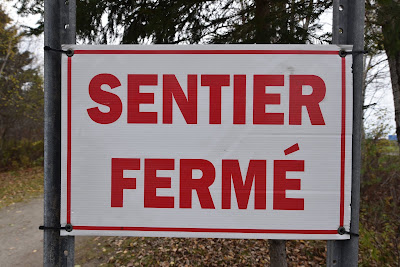


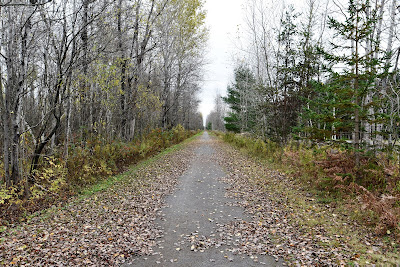


























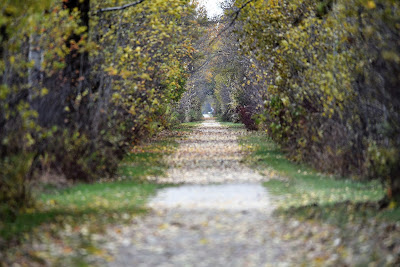






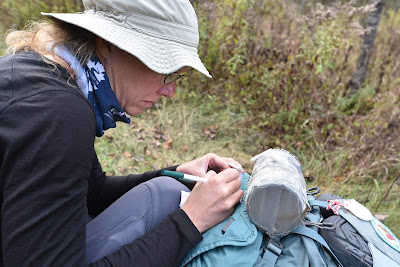







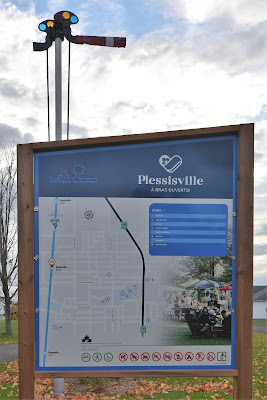
Comments
Post a Comment